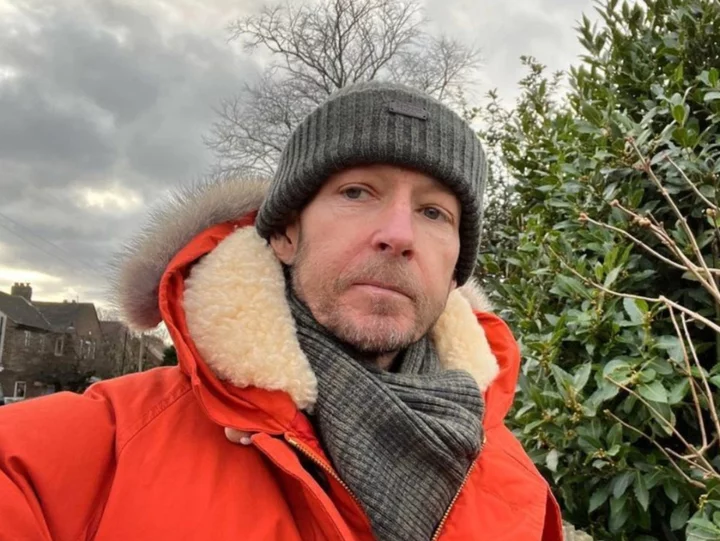
Jonnie Irwin explains why he hasn’t told sons about his terminal cancer: ‘Let’s bury our heads in the sand’
Jonnie Irwin has opened up about why he hasn’t told his three children that he has terminal cancer. The A Place in the Sun presenter, 49, publicly revealed his diagnosis in November 2022 after his lung cancer spread to his brain. However, his young sons, who he shares with wife Jessica Holmes, do not know that their father is dying. Irwin says it would be difficult for them to understand his situation at this age: his eldest son Rex is four-and-a-half, while twins Rafa and Cormac are turning three this month. In a new interview with Hello! magazine ahead of Father’s Day, Irwin said: “I keep being asked, ‘Are you going to tell them?’ but tell them what? “It would be horrible news that they’d have to get their heads around. And it would confuse the hell out of Rex – he’s got a shocking enough day coming. Let’s bury our heads in the sand for as long as possible.” In the meantime, Irwin and Holmes are trying to give their children a sense of normalcy by continuing to teach and play with them. Holmes described the presenter as a “great dad and a big kid himself”, adding: “All the boys gravitate to him when they want to show off and get his attention. They’re aware that Jonnie needs his rest and can’t always jump up and play football for hours, but they’re more than happy snuggled up on the sofa, watching a movie. “Story time is a big thing at bedtime and that is something I know Jonnie treasures with them.” In November, when Irwin first revealed his diagnosis, he said Rex “doesn’t need to know” about his illness yet. “We make fun of my hair – he calls it my ‘spiky head’ – but as far as he’s concerned, his dad is normal and why would I shatter that innocence?” Earlier this month, Irwin was admitted to hospital to be “monitored” as his treatment continues. He shared in an Instagram post that he was admitted to keep an eye on a “changeover in my pain management regime”. In an appearance on the OneChat podcast by insurer AIG Life, Irwin said he had been close to dying “at least twice”. “You lose your memory, you lose your patience. I have got a very short temper. It’s not made me a better person, that’s for sure,” he admitted. However, Irwin emphasised that he prefers to think of his situation as “living with cancer, rather than dying from cancer”. Read More A Place In The Sun’s Jonnie Irwin admitted to hospital amid terminal diagnosis Jonnie Irwin says he’s been ‘close to death’s door twice, at least’ Jonnie Irwin says going public with terminal cancer diagnosis was day he began ‘living again’
2023-06-12 14:49
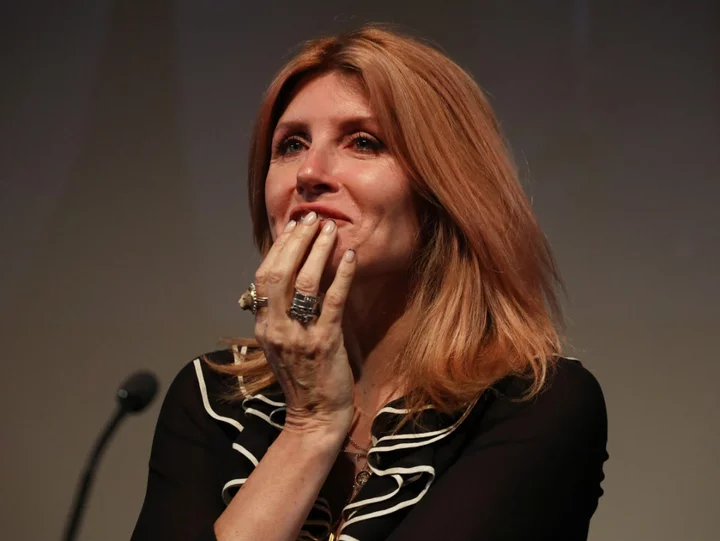
Sharon Horgan says she has PTSD from daughter’s health scare
Sharon Horgan has opened up about having post-traumatic stress disorder (PTSD) after her eldest daughter was diagnosed with meningitis as a baby. The Irish actor, who will star in the forthcoming BBC One drama Best Interests with Michael Sheen, said she drew on the experience in order to play her character in the new series. Horgan’s daughter survived the life-threatening illness, but it left an “aftershock” on her mother. “We were so unbelievably lucky and we know that,” the Bad Sisters star told The Times in a new interview, published today (Sunday 11 June). “But the aftershock – there’s definitely PTSD and I dealt with any of my second daughter’s illnesses with blind panic because you always think, ‘If it can happen, why couldn’t it happen again?’” Both of Horgan’s daughters, Sadhbh and Amer, are now teenagers. She shares them with her ex-husband, Jeremy Rainbird. Best Interests tells the story of Nicci (Horgan), a mother who sues the NHS after doctors decide her Marnie (Niamh Moriarty) should be taken off life support after her condition, muscular dystrophy, deteriorates. Horgan stars opposite Sheen, who plays Nicci’s husband Andrew. In the show, Andrew is torn between his love for Marnie and his unwillingness to support his wife’s case. The friction between Nicci and Andrew shows that they “had a real relationship that has difficulties”, Horgan said. “When things get really, really bad, the accusations are there, a certain amount of finger-pointing, which happens anyway, just even in normal parenting,” she explained. After her divorce from Rainbird in 2019, Horgan said the adjustment to co-parenting made her doubt if she was a good mother. During an appearance on Desert Island Discs in 2020, she told host Lauren Laverne: “I was fun mum for years. I entirely thought that was my role but that changes when you co-parent. “Everything changes and you take on a lot more roles and I am much more practical than I was, and I think that is a positive thing.” She continued: “It had some dips in the middle where I thought, ‘Oh, that thing I thought I was, which was a good mother, I am not entirely sure about’. “When you bring anything like that into your kid’s life it’s tricky, when you turn the roles upside down, but it balances out and everything eased back.” Read More Shapewear is booming, and body image experts are worried: ‘It’s really dangerous’ Chris Hemsworth thanks wife Elsa Pataky for her ‘forgiveness’ Kelis addresses Bill Murray dating rumours for the first time Sharon Horgan opens up about ‘aftershock’ after daughter’s meningitis Jamie Foxx’s rep addresses conspiracy Covid vaccine left actor ‘paralyzed and blind’ Debate sparker over parent who wouldn’t give her daughter any birthday cake
2023-06-12 14:16
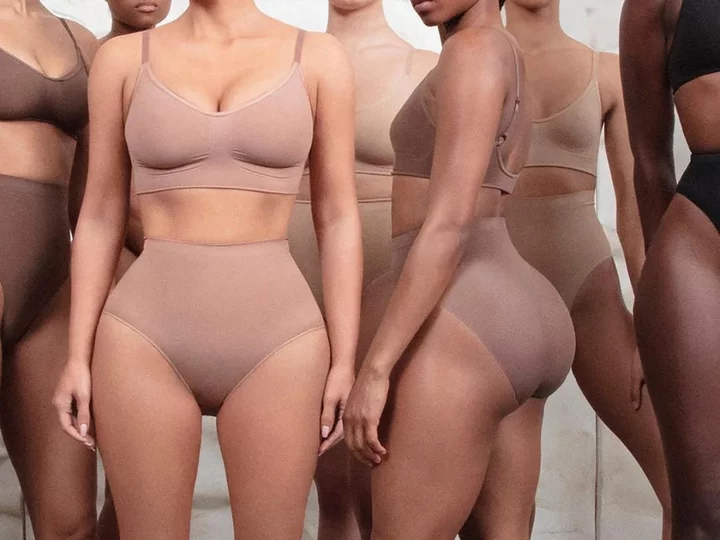
Shapewear is booming, and body image experts are worried: ‘It’s really dangerous’
In a number of scenes in 2001’s Bridget Jones’s Diary, our heroine – a thirtysomething singleton played by Renée Zellweger – squashes the skin of her lower torso into an array of Lycra shapewear, all in an attempt to make herself appear slimmer. When Hugh Grant’s Daniel Cleaver sets his eyes on her high-wasted, nude-coloured underpants in one memorable scene, Bridget blushes with embarrassment. “Well, hello mummy,” Daniel purrs. At the time of the film’s release, control shapewear – or tummy-tucking underwear designed to smooth its wearer – was marketed predominantly at people like Bridget, someone who was told by society she was “fat” or undesirable unless she had a flat stomach. Today, though, shapewear is branded differently, marketed to young women as a sexy, must-have fashion accessory. Shapewear products are not only promoted as stomach-smoothing fixes, but for anyone who wants a narrow waist or their figure to resemble a contoured, Kardashian-style hourglass. Skims, Kim Kardashian’s self-owned shapewear brand that she founded in 2019, sells viral sculpting bodysuits geared towards achieving this particular body shape. They start at £70. Since the launch of Skims, as with anything that a member of the Kardashian clan wears or makes, fast fashion knock-offs have swelled the market. Online retailer PrettyLittleThing, which has a murky track record of contributing to a harmful cycle of fast fashion, sells duplicates of the Skims viral bodysuit for around £20. They also sell waist trainers – a corset-style casing worn underneath clothes to aggressively teach your waist to be narrow – for just £12. “Doll cinch your waist in an instant with this waist trainer,” the item’s description reads. The product has boning to make it stiff and restrictive. Venture onto TikTok and you’ll find viral dresses with Spanx-style shapewear, designed to minimise the width of a person’s waist and accentuate their bottom, built into the clothing itself. While Skims is not solely responsible for this recent boom in shapewear, it has contributed to transforming how we view it – Bridget’s “granny pants” are now glamorous and aspirational. For the brand’s latest collection, for example, buzzy British singer-songwriters Raye and PinkPantheress were enlisted to promote it, along with viral Bronx rapper Ice Spice. The resulting campaign wouldn’t look out of place in the pages of Vogue. What this marketing tells us is that fashion isn’t just about the garments you wear, but the apparently malleable shape of the body on which they’re worn. Early shapewear emerged in the 16th century, not as a trend or body sculpting device, but for practical support. Karolina Laskowska, a lingerie designer and director of the underwear archive The Underpinnings Museum, tells me that the primary purpose of shapewear back then was to support the body much in the same way that a contemporary bra is made to support the breasts today. “A pair of stays [a corset style bodice] would have offered bust and back support for women who worked,” she explains. “These styles were more functional and supportive, rather than trend-driven.” The beginnings of the shapewear we see today were first seen in the Sixties, when the invention of Lycra, a synthetic-based elastic fibre, allowed for stretchier fabrics. What Laskowska dubs the grandparent of modern shapewear was the “Little X Girdle” by a British brand called Silhouette. “It was a turning point for a shift from traditional structured corsetry into elasticated shapewear,” she says. The item was a seamless, pull-on girdle – an elasticated corset extending from waist to thigh – and was eventually licenced to sell in over 32 countries as turnover increased exponentially. We then saw the evolution of more comfortable, everyday shapewear, like those made by Spanx, an American brand founded in 2000. They’re so uncomfortable, but they’re so afraid of what others will think about them due to their body size Victoria Kleinsman By contrast, modern shapewear is now geared towards sculpting the body to appear differently underneath clothes. And now, fast fashion is getting involved, too. But lingerie designers like Laskowska are increasingly worried about the consumer physically “hurting” themselves with badly made undergarments. “We’ve seen fast fashion adopt corsetry and shapewear trends but it’s not made to fit the human anatomy, since it’s made to be as cheap as possible,” she says. She adds that people could “injure” themselves with elasticated shapewear if they buy a size too small, meaning they could potentially restrict their blood’s circulation. Victoria Kleinsman, a self-esteem expert and body love coach, works with women between the ages of 13 to 60, and says that she’s seen how her younger clientele are feeling the pressure to wear shapewear in order to conform to the cult of thinness. Some clients have bought pantyhose with built-in cushioning to make the bottom look larger and perkier. Others will wear layers of shapewear to sculpt the body, particularly the waist and stomach, to look slimmer or flatter. To Kleinsman, wearing modern shapewear allows people to apply an “IRL [Instagram] filter” to their bodies. She speaks to women each day who are “crying” to her on Zoom calls because they’re worried about what their bodies look like. “It’s to the point when it’s boiling hot weather [but] they’re wearing spandex shapewear and tights, and they’re so uncomfortable, but they’re so afraid of what others will think about them due to their body size.” The expert fell into her line of work after she struggled with an eating disorder – she also wore a waist trainer when she was dealing with her own body image issues. “I would go to the gym wearing it because apparently you ‘sweat more’ and therefore lose ‘water fat’,” she says. “Which is b******! It’s physically painful to your physical body and even more painful to your emotional and mental well-being.” Kleinsman doesn’t think that this type of elasticated shapewear has anything to do with fashion and it should not be marketed as such. “It’s really dangerous,” she tells me. “Shapewear gives you a fake ‘confidence’ but then underneath it all when that comes off, then, who are you?” The popularity of Skims and their various knock-offs doesn’t seem likely to decline any time soon, but Kleinsman is hopeful that more women will soon have epiphanies about the shapewear revival. “Fatphobia and body image trauma is still the norm,” she sighs. “There has never been more [appropriate] a time for us to embrace our natural bodies.” Read More ‘The models are skinnier than ever’: Has London Fashion Week stopped caring about body diversity? Hostage to fashion: Margot Robbie’s Chanel problem speaks to a wider red carpet crisis Jeans shopping is still a total nightmare Kim Kardashian says Kris Jenner gets ‘sad’ thinking of how fame changed her family Kanye West and wife Bianca Censori cause confusion with Sunday Service outfits Chanel’s classic 1926 little black dress added to fashion exhibition in Scotland
2023-06-12 13:59

Rosamund Pike warns people are ‘being conned by the wellness industry’
Rosamund Pike has said that the wellness industry is a “con” that is “so seductive” because it claims to fulfil people’s desires such as youth, beauty and fitness. The Gone Girl star, 44, was asked about “satirical mentions” of Gwyneth Paltrow’s wellness platform Goop in her new project, a BBC audio drama titled People Who Knew Me. She said: “I think we’re all being conned by the wellness industry. This idea that it’s no longer enough to be healthy and we have to be ‘well’ is something that needs to be interrogated. “Yet it’s so seductive because it’s in pursuit of things that people are ashamed to want, like youth, beauty and fitness.” Pike reflected on how the MeToo movement “gave women an opportunity to escape some of the demands put on them”, but nearly six years since the movement began, people are now “voluntarily flocking back to being controlled but in a different guise”. “It’s politicised our food, politicised our exercise, and I think it’s really dangerous,” she told the Guardian in an interview published today (Sunday 11 June). Pike’s forthcoming audio drama, which also features Hugh Laurie, follows her character Emily Morris, who uses the 9/11 tragedy to fake her own death and run away to California to assume a new identity as Connie Prynne. According to the BBC, Pike’s character is diagnosed with breast cancer 14 years later and must decide how to explain her secrets to her 13-year-old daughter Claire. In 2021, Pike launched a meditation app called Lumenate, which she claimed could help guide users “into an altered state of consciousness”. As the creative director of the app, she explained on Instagram: “Based on two years of research into the effects of stroboscopic light on brain function, the mobile app uses stroboscopic light sequences from your phone’s flashlight to neurologically guide you into an altered state of consciousness. “All you need in 10 minutes to yourself in a darkened room and the camera light on your phone… I promise. “Since I started using the app during its initial testing phase, I have experienced deep inner awareness through the totally incredible kaleidoscope of colours created by my subconscious.” Read More Sharon Horgan opens up about ‘aftershock’ following daughter’s meningitis scare: ‘There’s definitely PTSD’ Megan Fox hits back at US politician’s claim she ‘forced’ her sons to wear ‘girls clothes’ Oscar de la Renta and deli flowers: Inside Naomi Watts and Billy Crudup’s New York wedding Sharon Horgan opens up about ‘aftershock’ after daughter’s meningitis Jamie Foxx’s rep addresses conspiracy Covid vaccine left actor ‘paralyzed and blind’ Gamer finds indent in head from prolonged headset use after shaving his hair
2023-06-11 21:17

Sharon Horgan opens up about ‘aftershock’ following daughter’s meningitis scare: ‘There’s definitely PTSD’
Sharon Horgan has opened up about having post-traumatic stress disorder (PTSD) after her eldest daughter was diagnosed with meningitis as a baby. The Irish actor, who will star in the forthcoming BBC One drama Best Interests with Michael Sheen, said she drew on the experience in order to play her character in the new series. Horgan’s daughter survived the life-threatening illness, but it left an “aftershock” on her mother. “We were so unbelievably lucky and we know that,” the Bad Sisters star told The Times in a new interview, published today (Sunday 11 June). “But the aftershock – there’s definitely PTSD and I dealt with any of my second daughter’s illnesses with blind panic because you always think, ‘If it can happen, why couldn’t it happen again?’” Both of Horgan’s daughters, Sadhbh and Amer, are now teenagers. She shares them with her ex-husband, Jeremy Rainbird. Best Interests tells the story of Nicci (Horgan), a mother who sues the NHS after doctors decide her Marnie (Niamh Moriarty) should be taken off life support after her condition, muscular dystrophy, deteriorates. Horgan stars opposite Sheen, who plays Nicci’s husband Andrew. In the show, Andrew is torn between his love for Marnie and his unwillingness to support his wife’s case. The friction between Nicci and Andrew shows that they “had a real relationship that has difficulties”, Horgan said. “When things get really, really bad, the accusations are there, a certain amount of finger-pointing, which happens anyway, just even in normal parenting,” she explained. After her divorce from Rainbird in 2019, Horgan said the adjustment to co-parenting made her doubt if she was a good mother. During an appearance on Desert Island Discs in 2020, she told host Lauren Laverne: “I was fun mum for years. I entirely thought that was my role but that changes when you co-parent. “Everything changes and you take on a lot more roles and I am much more practical than I was, and I think that is a positive thing.” She continued: “It had some dips in the middle where I thought, ‘Oh, that thing I thought I was, which was a good mother, I am not entirely sure about’. “When you bring anything like that into your kid’s life it’s tricky, when you turn the roles upside down, but it balances out and everything eased back.” Read More Michael Sheen says he finds it ‘hard to accept’ non-Welsh actors playing Welsh roles Megan Fox hits back at US politician’s claim she ‘forced’ her sons to wear ‘girls clothes’ Duchess of York moved to tears by Princess Eugenie’s baby name tribute Jamie Foxx’s rep addresses conspiracy Covid vaccine left actor ‘paralyzed and blind’ Gamer finds indent in head from prolonged headset use after shaving his hair Wes Anderson reflects on being an ‘old father’
2023-06-11 19:50

Jennifer Lawrence 'totally' wants Hunger Games return
Jennifer Lawrence is "totally" open to return to reprising her role as Katniss Everdeen in 'The Hunger Games' franchise.
2023-06-11 15:16

Can humans and rats live together? Paris is trying to find out
Can humans and rats live together?
2023-06-10 17:18
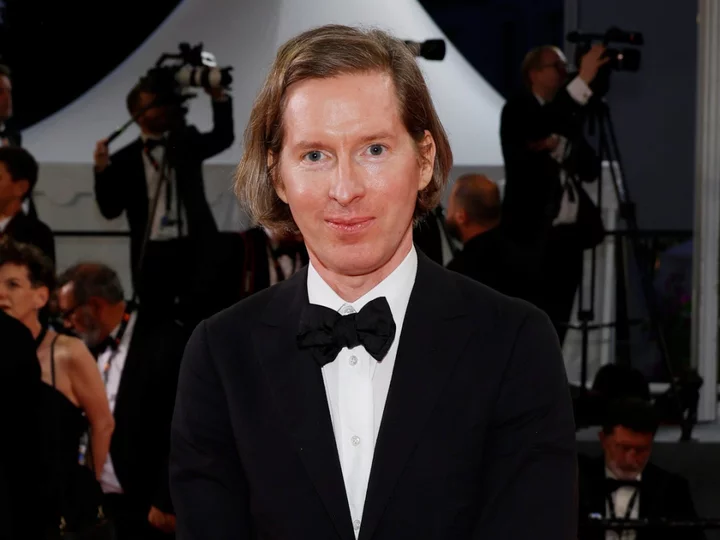
Wes Anderson reflects on being an ‘old father’
Wes Anderson has reflected on being a father to his seven-year-old daughter Freya at the age of 54. The filmmaker lamented that he is an “old father” to his child, whom he shares with his partner, designer and author Juman Malouf. In a new interview published on Saturday (10 June), the Asteroid City director said he did not give his own mortality any thought until he became a parent. “I never used to think about having not much time left for this or that, or noticing how the time had disappeared so fast,” he told The Times. “It didn’t have an emotional effect on me whatsoever.” However, parenting a young child has made him think about it more often. “But now my daughter will be, well, I will be very old when my daughter is still very young,” he continued. “I am an old father. And maybe with modern medicine it’s better than it used to be, but you know…” Anderson, whose family home is in Kent, was reminded that he had once said he hoped to die at the age of 90 on a film set. He said: “Yes. That’s good. But I do feel a different thing now, which is somehow my family is more part of it now. And the only thing about [dying on] the film set is that they won’t be there. “But, you know, they don’t need to see me die. They have enough to worry about. They can just take my ashes.” Elsewhere in the interview, Anderson shared his thoughts about a popular TikTok trend that sees users creating short clips about their everyday lives in a film style similar to his. He revealed that he does not watch the TikTok videos and erases them “immediately” if someone sends one to him. Anderson and Malouf have been together for more than two decades, and she has collaborated with him on a number of his projects. The couple curated an exhibition at Vienna’s Kunsthistorisches Museum in 2018, comprising of 537 objects from the museum’s collection. It was titled Spitzmaus Mummy in a Coffin and Other Treasures, and also exhibited at the Prada Foundation in Milan the following year. Read More Wes Anderson tells friends not to send him TikToks of people impersonating his style: ‘I’ll immediately erase it’ Asteroid City, Cannes review: Wes Anderson’s enrapturing cosmic comedy is an offbeat Close Encounters Wes Anderson on his new '50s-set film 'Asteroid City,' AI and all those Tik Tok videos Fans react to rumours that Kelis, 43, is dating Bill Murray, 72 Amy Schumer reveals the reason she stopped taking Ozempic Debate sparker over parent who wouldn’t give her daughter any birthday cake
2023-06-10 16:46

Chanel’s classic 1926 little black dress added to fashion exhibition in Scotland
Curators are “delighted” to have secured a little black dress designed by Chanel in 1926 to open an exhibition on the success of the garment over almost a century. Beyond The Little Black Dress, which launches at the National Museum of Scotland in Edinburgh next month, will bring together more than 60 looks from collections and designers around the world. It opens with a long-sleeved black day dress designed by Gabrielle Coco Chanel in 1926, which was hailed by US Vogue as “the frock that all the world will wear”. The silk crepe dress is on loan from the Kunstgewerbemuseum (Museum of Decorative Arts) in Berlin. Georgina Ripley, principal curator of modern and contemporary design at National Museums Scotland, said: “The dress is incredibly significant for its own merit anyway, but for our exhibition it’s really pivotal because we are opening the exhibition with the idea that this is kind of the birth of the little black dress. “The well-known story within fashion history is of Chanel being the inventor of the little black dress and 1926 being the date, and that’s because a very simple long-sleeved day dress of silk crepe de Chine was featured in US Vogue in the October edition and it called this dress the ‘frock that all the world will wear’. “The dress that we have on loan from the museum in Berlin is not the exact dress that featured in that Vogue article, but it is the exact same style, made from the same sort of fabric, and it’s incredibly rare to actually find little black day dresses from that date in collections. “It’s been amazing for us to be able to locate one, to be able to tell this really important story within the history of the little black dress.” Vogue compared the dress to Henry Ford’s model T motor car, linking it to the idea of the democratisation of fashion, although it would still have been very expensive and only affordable to the wealthy. The dress drew on the functionality of menswear and of clothes worn by those working in the service industry, such as maids and shop workers. Chanel’s contemporary Paul Poiret described the style as “poverty de luxe” – things that have humble origins elevated to couture-style clothing. While black was already in fashion before 1926 and other little black dresses had been created, something about Chanel’s design was seen as being an important moment in the modernisation of women’s fashion. The exhibition was originally due to open in 2020 but was pushed back due to Covid, and curators were “thrilled” they could still borrow the dress from the museum in Berlin this year. Ripley said: “This is such a natural place to start this story because it’s known in fashion history and we also wanted to confront head on that it really is just a moment that has been picked upon as the origin of the little black dress, but it would be really strange to tell that story without having that dress. “We had our heart set on telling the story in that way and opening with this dress, so we’re delighted we’ve been able to see that mission through.” The exhibition looks at fashions through the decades, from early pieces by Yves Saint Laurent, Christian Dior and Jean Muir to contemporary designers and brands such as Gareth Pugh, Simone Rocha and Off-White. Areas of the exhibition are dedicated to highlighting black British designers whose work explores both blackness in terms of identity and the role the colour plays in crafting a futuristic, sci-fi aesthetic. It also considers how perceptions of the colour black differ in a global context. The exhibition runs from 1 July until 29 October. Read More Jennifer Lawrence steps in to clarify theory about her Cannes footwear Qantas ditches mandatory heels and embraces make-up for flight attendants of all genders Love Island line up: Meet the contestants and couples of the 2023 summer edition Charity boss speaks out over ‘traumatic’ encounter with royal aide Ukraine war’s heaviest fight rages in east - follow live
2023-06-10 15:53

This school reopened quickly after COVID. Kids' reading was still behind
Exiting from the pandemic, the assumption might be students who returned quickly to in-person learning might be the least scathed academically
2023-06-10 13:55
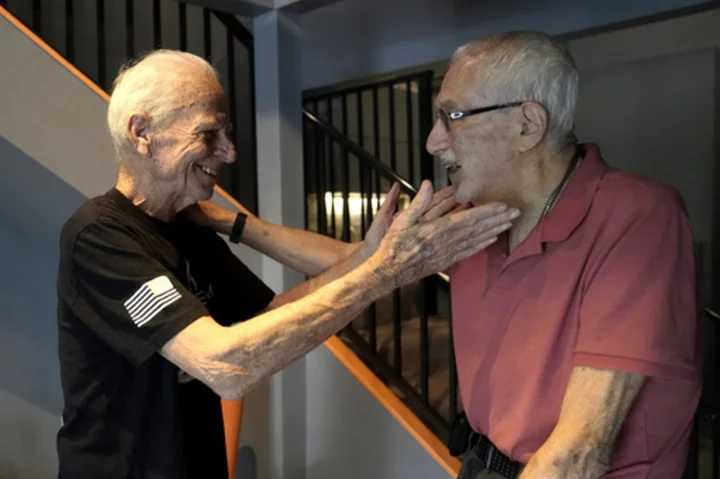
Florida center says 'Grey Team' technology, exercise help veterans overcome PTSD and other ailments
A Florida organization is helping veterans with post-traumatic stress disorder and other mental and physical ailments get back into the civilian world
2023-06-10 12:26

Most garden plants will bounce back from exposure to smoke and ash. How to care for them
Smoke from wildfires that has polluted the air across swaths of the Eastern United States and frequently impacts the West could affect garden plants if the exposure is prolonged
2023-06-10 12:21
